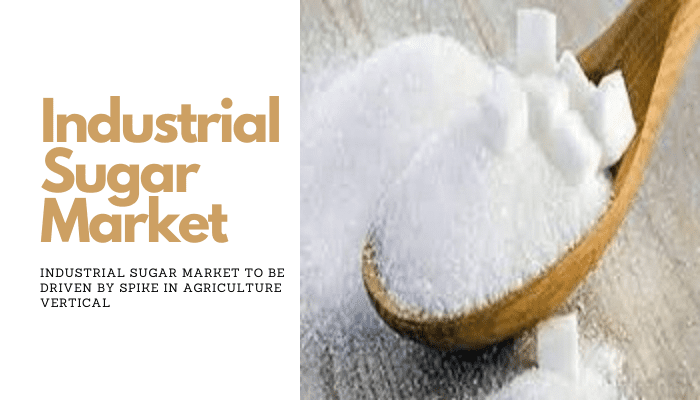The “agriculture” vertical, production of cane sugar is creating new strides at regular intervals. This factor is certainly expected to have an amicable impact on manufacturing statistics of the industrial sugar market.
The two basic raw materials used for manufacturing industrial sugar at the commercial level are beetroot and sugarcane. Due to initial adoption of cane sugar, it is preferred by the end-users. As such, it is produced in abundance. However, the current trend is that of the same end-users shifting to beet sugar due to growing awareness with respect to health hazards associated with higher consumption of cane sugar.
At the same time, growing concern about ecological impact regarding large scale sugar crop farming could restrain the industrial sugar market. It has been observed that numerous countries worldwide reserve more than 25% of the farming land to the production of sugarcane. The use of fertilizers and agrochemicals beyond limit ought to contaminate the water, thereby adversely affecting people and wildlife. Plus, sugar do enable release of toxic gases out of combustion, which could, in turn, be harmful to wildlife and human beings. Additionally, monoculture production of sugar along with alternative sweeteners inclusive of raw honey, stevia, dates, and coconut sugar are expected to further restrain the industrial sugar market. Persistence Market Research has mentioned these facts with insights in its latest market study entitled “Industrial Sugar Market”.
How is the Industrial Sugar Market segregated?
The global industrial sugar market, by type of product, spans raw, refined, and brown. By industrial use, it’s sweetener, bakery products, confectionery, beverages, packaged foods, pharmaceuticals, and likewise. By source, it’s beet and cane. Refined sugar dominates the market in terms of manufacturing as well as usage. This could be attributed to an increasing demand in bakery and confectionery products apart from daily usage. By structure of products, it’s granulated, syrup, and powdered. The granulated form does find applications in dairy, pharmaceutical, and food & beverage vertical. Persistence Market Research has given a detailed snapshot of these facts with future measures to be taken in its latest market study entitled “Industrial Sugar Market”.
Region-wise Analysis
LATAM leads the industrial sugar market with Brazil ruling the roost. It has been observed that the production of industrial sugar had almost doubled between 2001 and 2014. This trend is expected to continue even in the forecast period. The Asia-Pacific follows suit. The countries holding the baton include Indonesia, Pakistan, India, and China. This could be attributed to feasible atmospheric conditions. Then comes in the European Union, which basically used industrial sugar to produce beet sugar. North America is going steady with consumption of industrial sugar. Persistence Market Research has entailed these facts with insights in its latest market study entitled “Industrial Sugar Market”.
The Competition-Centric Analysis
Persistence Market Research has profiled the key players in industrial sugar market as Suedzucker AG, Associated British Food plc, Tereos Internacional SA, Mitr Phol Sugar Corporation Ltd., Louis Dreyfus Holding B.V., Wilmar International Ltd., American Crystal Sugar Company, E.I.D.-Parry (India) Ltd., Shree Renuka Sugars Ltd., Cosan SA Industria e, Comercio and likewise. These key players are into organic as well as inorganic mode of expansion for strengthening their hold over the industrial sugar market.
What’s in store for the next decade?
The global industrial sugar market will grow at a ballistic rate in the next decade – Persistence Market Research
For In-Depth Competitive Analysis, Buy Now @https://www.persistencemarketresearch.com/checkout/16633



































